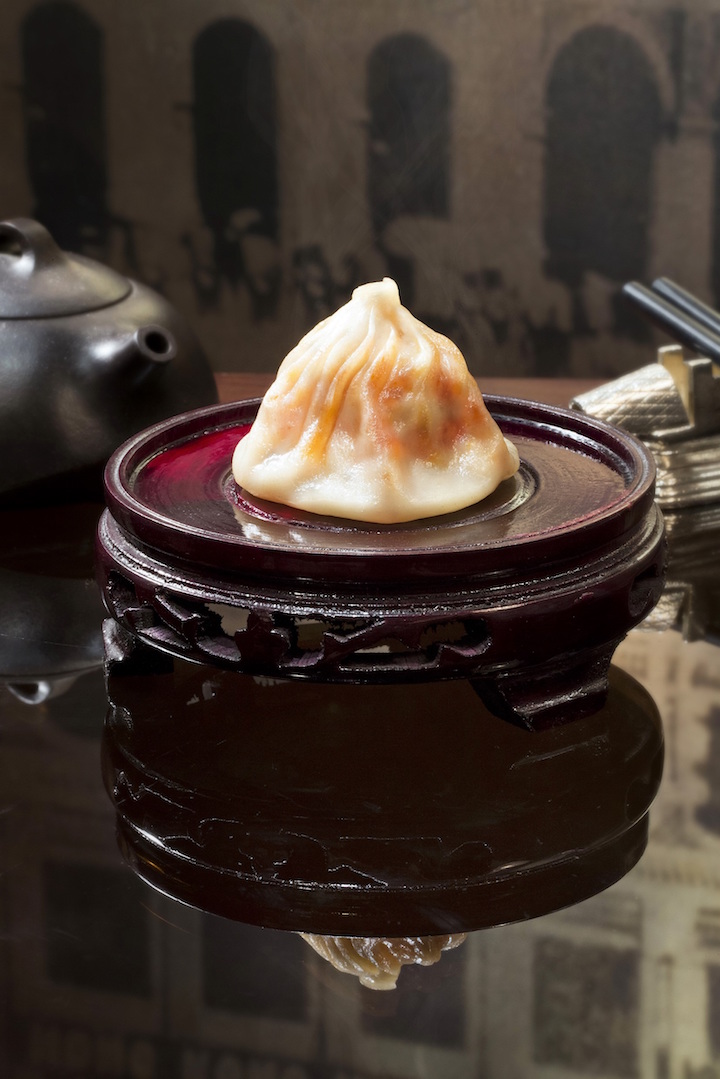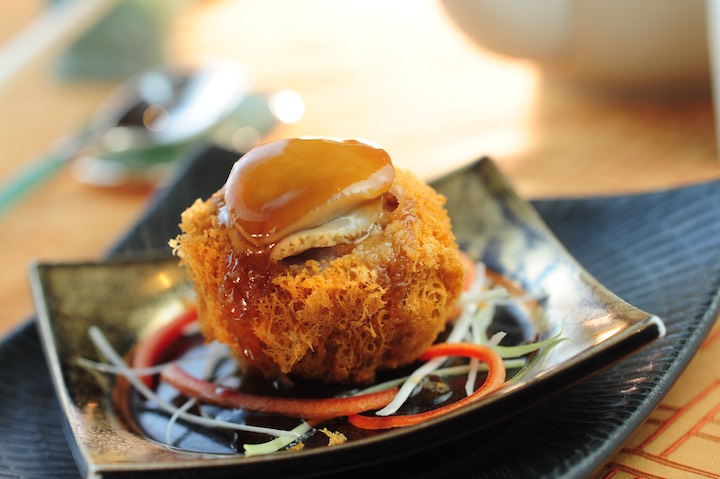Every dim sum pilgrim has a favourite item of their own, so we hunt down the best places that are renowned for various dishes.

Shrimp Dumpling: Shang Palace
The shrimp dumpling is, without a doubt, the most iconic dish in Cantonese dim sum, and Shang Palace’s version is unrivalled. On top of the freshness of the shrimp, the dumpling is a winner with a dumpling skin thinner than 1mm and contains the optimal proportion of shrimp and fatty pork (600g of shrimp to 37g of pork). With just the right amount of steaming time, the result is shrimp dumplings with a lot of body, springiness and oozing with sweet meat juices.
Siu Mai: Duddell’s and Tin Lung Heen
In addition to the pork filling, vintage-style siu mai are topped with slices of quail egg or pork liver. Among them, quail egg siu mai is very difficult to make, yet it’s something Duddell’s does with exceptional precision. Its dumplings have fresh shrimp, as well as shrimp broth in the pork filling, which wraps a soft-boiled quail egg that is cooked just right.As for modern interpretations, Tin Lung Heen makes an impression with its steamed spotted garoupa dumpling with coriander. The garoupa lends the dish much refinement and umami, while the addition of squid and cured ham adds chewiness to the siu mai.

Barbecue Pork Bun: Tim Ho Wan
The white, volcano-shaped barbecue pork bun made with long-matured dough is a collective memory to many local diners. Nowadays, many restaurants prepare both the barbecue pork bun and its crunchier baked spin-off. The innovative dish is made famous by Tim Ho Wan. The recipe is simple—the barbecue pork is mixed with oyster sauce and stuffed inside the bun, and it is baked with a layer of puff pastry on top. The most vital part to the dish is to serve it fresh, when the puff pastry is still crunchy and breaks up easily with a bite. Due to the high demand, the buns at Tim Ho Wan are constantly refreshed.
Cheung Fan: T’ang Court
Cheung fan, or, rice flour rolls, are made from a rice flour batter. It is yet another Cantonese staple that is available at the most premium restaurants and humble cha chaan tang. Traditional cheung fan has fillings like barbecue pork or shrimp steamed with the batter and later rolled to the finished form. In comparison, its younger sibling stir-fried rice rolls demonstrates a different texture and flavour.T’ang Court prepares every component of the stir-fried rice flour rolls with X.O. sauce in its kitchen. The X.O. sauce incorporates various kinds of deluxe seafood that are made well ahead of time. The rice rolls are freshly steamed every day with dried shrimps and spring onions, before pan-fried with a generous amount of the X.O. sauce until golden. With that sensational sauce enveloping every side of every roll, no condiments are required.

Xiao Long Bao: Spring Moon
Shanghainese xiao long bao has been adopted by most Cantonese dim sum restaurants nowadays. A well-made dumpling should have a soft and thin skin which carries a good amount of broth, as well as pork and shrimp filling. But Spring Moon goes beyond this standard, employing Sicilian red shrimps to create a broth bursting with the sweetness of seafood. The balanced pork-shrimp proportion is also worth praising.
Taro Dumpling: Yan Toh Heen
Made with deep-fried taro mash stuffed with different fillings, the taro dumpling is not served in many dim sum destinations due to the lengthy cooking process. Yan Toh Heen’s version boasts a shining lineup of filling. Abalone and other types of seafood accentuate the effort and technique put into preparing this crispy classic.
Abalone Puff: Lung King Heen
Savoury dim sum pastries have been gaining favour recently. Without the boundary of tradition, it is an area where dim sum chefs can assert their creativity. The abalone puff that we come to know and love was invented by chef Chan Yan Tak at Lung King Heen. While a traditional abalone puff doesn’t actually contain abalone, Chan is inspired by Chinese wedding cakes and uses canned 15-head South African abalone as the star of the dish. The flaky butter puff base carries diced chicken and mushroom, providing a delicious backdrop to the succulent abalone.
Teochew Dumpling: Summer Palace
Steamed dumplings in dim sum is a large and varied family. Teochew dumpling thrives on a wider mix of ingredients compared to the shrimp dumpling. A diners’ favourite, the steamed vegetarian dumpling at Summer Palace puts together finely-sliced king trumpet mushroom, shiitake mushroom, button mushroom, diced carrot and water chestnut in its filling. Another ingenious touch is replacing peanuts with Indian almonds, giving the dumpling a more special fragrance.
Chicken Feet: Ming Court
As a dim sum dish, chicken feet can go to two extremes: one served hot, deep-fried and steamed with oyster sauce and soy sauce; the other, a more subtle version, belongs to the Guangzhou-style, and is served cold after steaming. Ming Court’s creation belongs to the latter category. The cooked chicken feet are soaked in vintage huadiao wine for more than six hours, and then refrigerated for another three hours until the chicken feet fully absorb the wine’s aroma. On top of the rich taste of huadiao, the bouncy texture of the skin is a winner.
Beef Puff: Man Wah
Man Wah’s beef tenderloin puff is a step forward from the 90s invention of the turnip puff pastry. The turnip puff originated from Mainland China as a marriage between the Shanghainese and Cantonese pastry-making techniques. The pastry is admired for its intricacy, like in croissants, with each layer being laid out clearly. Man Wah replaces turnip with Australian wagyu that is seasoned with tangy black pepper. The multifold puff pastry is charming on its own with a buttery aroma and airy texture. It also makes for a perfect accompaniment to the piping hot beef filling.
This article was written by Emily Tong and translated by Vincent Leung. Click here to read the original version of this story.





















